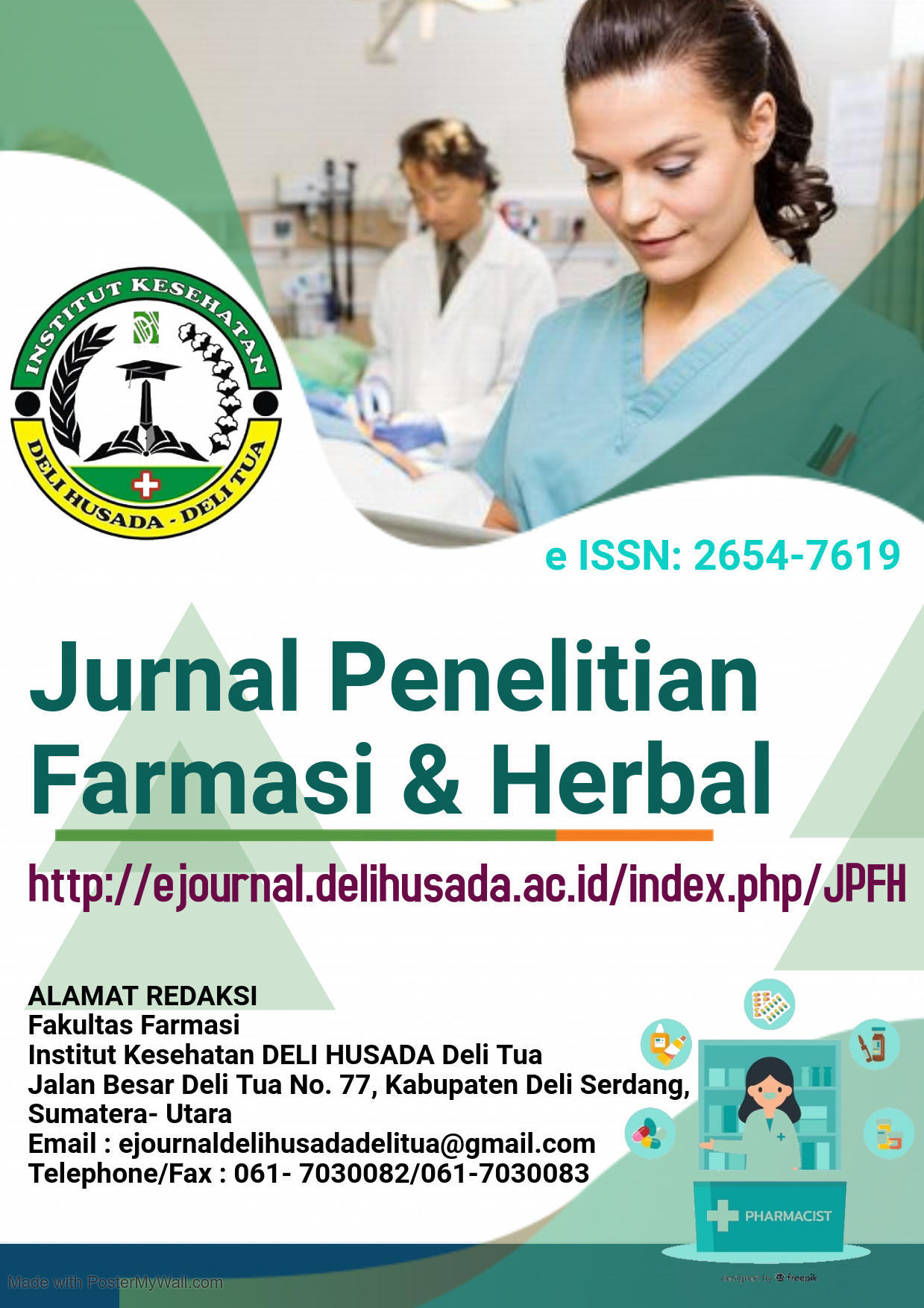PHENOL COEFFICIENT OF DISINFECTANT PRODUCTS DISTRIBUTED IN A SUPERMARKET OF LUBUK PAKAM
Abstract
Disinfectant products distributed in Lubuk Pakam vary in types from different manufacturers. The disinfectant ingredients are phenol and quartenary ammonium. The potency of disinfectant for killing microorganisms needs to be evaluated to assure the quality of the products. This study was carried out to determine the effectivity of disinfectant products based on phenol coefficient. Phenol coefficient testing of disinfectant products was microbiologically performed against Salmonella typhi. The disinfectant solutions were prepared by diluting the sample in sterile distilled water in ratio of 1:5, 1:10, 1:20, 1:30, 1:40, and 1:50. Phenol solution (5%, w/v) was used as disinfectant standard. The growth of bacteria was observed at the exposure time of 5, 10, and 15 minutes. The results indicated that the phenol coefficient of product A, B, C, D, E, F, and G were 2.38, 2.00, 3.00, 3.38, 2.38, 2.63, and 3.00, respectively. Statistical analysis using Kruskal-Wallis test showed that the quality of desinfectant products was significantly different (p < 0.05). This study revealed that product A, B, C, D, E, F and G distributed in many supermarket of Lubuk Pakam fulfilled the requirement of disinfectant activity. Product that contain HCl had the strongest activity than other disinfectant products.
Downloads
References
Dwidjoseputro. (1982). Dasar-Dasar Mikrobiologi. Jakarta: Penerbit Djambatan. Hal. 102, 118-134.
Eka. (2006). Desinfektan dan Antimikroba. Jakarta: Penerbit Universitas Indonesia. Hal. 26; 49-65.
Kahrs, R.F. (1995). Disinfectants, antiseptics, sanitizers, and sterilizing agents. Revue Scientifique et Technique de L’ Office International Des Epizooties, 14 (1), 105-122.
Pelczar, J.R., dan Chan, E.C.S. (1998). Dasar-Dasar Mikrobiology. Diterjemahkan oleh Hadioetomo, R. S., Imas, T., Tjitrosomoso, S., dan Lestari, S. Jakarta: Penerbit UI Press. Hal. 132, 138-140, 144.
Pratiwi, S. (2008). Mikrobiologi Farmasi. Jakarta: Penerbit Erlangga. Hal. 17-18.
Purohit, S.S., Saliys, A.K, Karkam, H.N. (2004). Pharmaceutical Microbiology. Jodhpur, India: Agrobios India. Hal. 332.
Russel, dkk. (1987). Understanding Antibacterial Action and Resistance. Cardiff: Welsh School of Pharmacy University of Wales College of Cardiff. Hal. 101-111.
Shaffer, J.G. (1965). The Role of Laboratory in Infection Control in the Hospital. Arbor: University of Michigan, School of Pulbic health. Hal. 354, 357.
Singleton, E. (2000). Disinfectan: Phenol Coefficient Methods. New York: AOAC International.
Siswandono. (1995). Kimia Medisinal. Surabaya: Airlangga University Press. Hal. 249-251.
Wesley, addison. (1986). Medical Microbiology. Second edition. Texas: Department of microbiology of University Of Texas medical Branch. Hal. 354-358.







